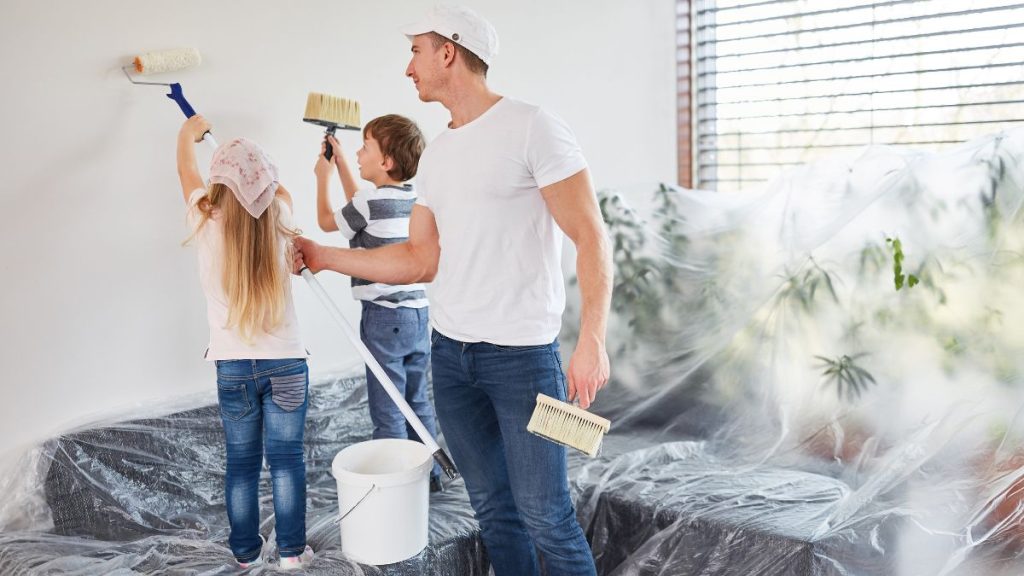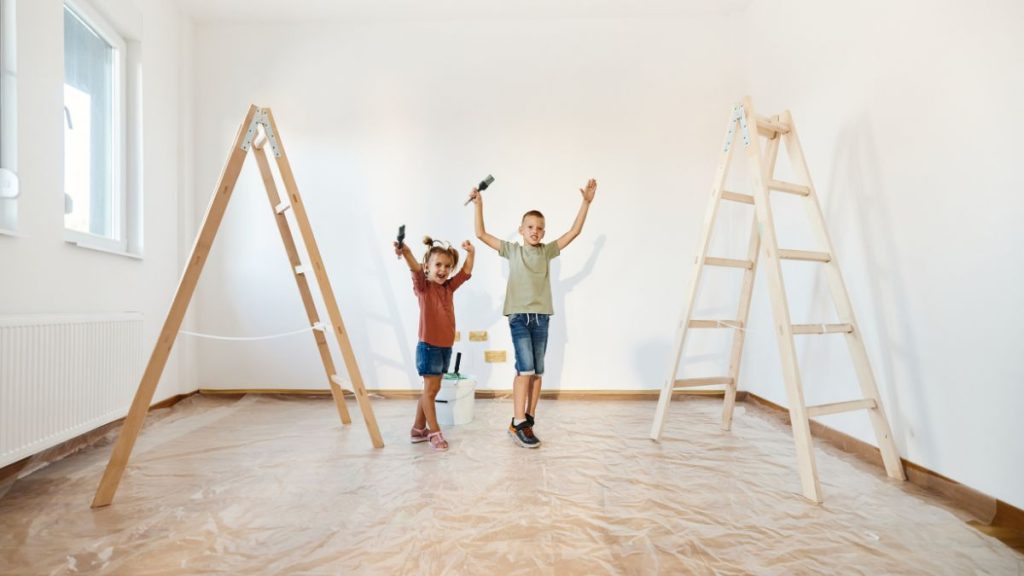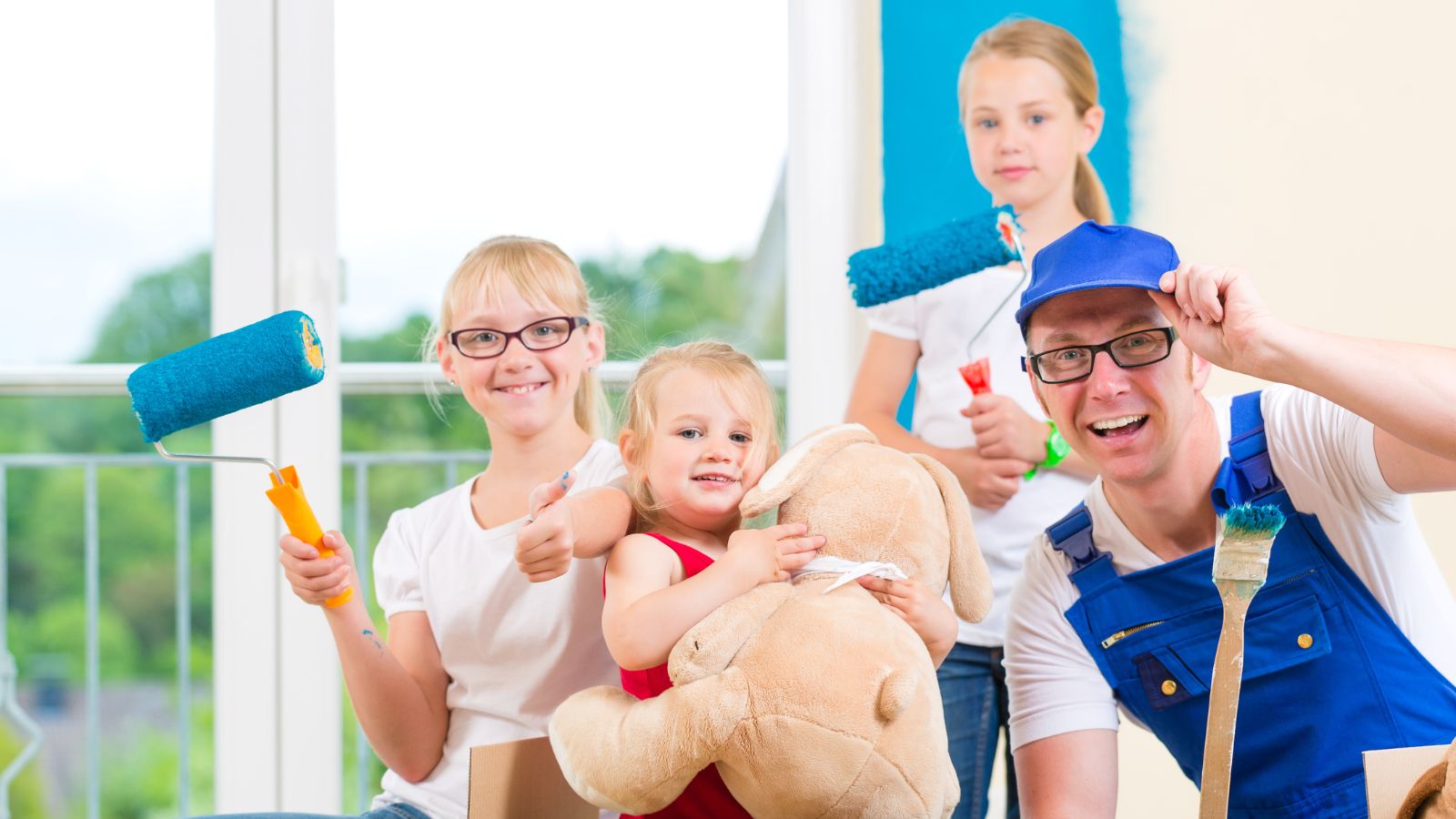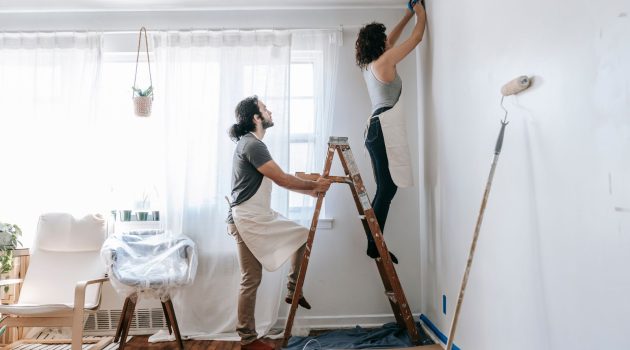Imagine your home as the stage of a wild play, with the daily drama of drills whirring and hammers pounding. Amidst the dust and din, your little ones play the main characters, curious and ever-moving.
You’re tasked not only with directing this lively performance but also with keeping the plot from turning into a true comedy of errors.
The vision of a revamped space is thrilling, but the path to it, strewn with toys and tools alike, is an adventure in its own right.
Renovations shake up the familiar comfort of your home, bringing a test of patience to your whole family. Yet, this challenge doesn’t have to be a daunting ordeal.
With mindful planning and a few smart moves, you can transform this turbulent period into a time of growth and creative play for your children.
More than a mere backdrop, safety needs to lead each act, ensuring that amidst the story, the well-being of your cast is never in question.
As you embark on this journey, remember that it’s about balance—the art of pushing forward with your home goals while nurturing a safe, engaging space for your curious youngsters.
Keep your plans flexible, your approach proactive, and your toolbox ready, not just with nails and tape measures but with fun tasks and learning chances for your little helpers.
The renovation will unfold, and so too will the memories of crafting a home together, safely and joyously.
1. Prepare The Kids In Advance

Introduce the Concept of Renovation
Before work starts, sit down with your kids and talk about the changes coming to your home.
Describe what a renovation means: walls might move, new colors will brighten rooms, and the house might feel like a new place for a while.
Keep your tone light and excited to help them understand the process, which can be a fun adventure.
Choose Designs Together
Give your kids a voice in the project. Let them help pick out the paint for their room or weigh in on fun fixtures.
When they help with choices, they may feel more in control and less anxious about the changes.
Set Clear Expectations
Renovations can be loud and messy, with lots of new faces and routines shifting. Be honest with your kids about the dust, noise, and the presence of workers.
Talk about keeping away from areas where plumbers or painters work to stay safe. Help your kids understand the home may be in a bit of chaos, but it’s temporary and part of creating a great space for everyone.
2. Keep Spaces Safe
Create Child-Safe Zones
As you embark on your home’s renovation, securing areas in the house is crucial for your kids’ safety.
Erect firm barriers such as doors or safety gates to ensure young kids remain at a safe distance from any construction zone.
Suppose you have enough space; set aside a room just for play. Fill it with toys and make it a sanctuary for your children—one that’s far from noise, work zones, and danger.
Manage Dust and Contaminants
During renovations, dust and potential contaminants like asbestos can pose health risks, especially for those with allergies or asthma.
Keep the air in your home as clean as possible. Before work begins each day, cover air vents in the work area to prevent dust from spreading to other rooms.
At the end of the day, ensure any accumulated dust is cleared, helping maintain a healthier environment for your family.
Store Tools and Materials Securely
Tools and building materials interest kids but can be hazardous. Take extra care to store all tools and supplies in a locked area when not in use.
Look for storage solutions that children cannot easily open or reach.
Making sure sharp tools, toxic substances, and other dangerous items are out of kids’ reach will give you peace of mind and keep curious little hands safe.
READ MORE: 20 DIY Hat Rack Ideas to Store Your Headwear in Style
3. Stay Organized And Tidy

Declutter Your Space
During a renovation, it’s essential to keep your living areas safe and functional. Start by boxing up any toys and items that are not in daily use.
This keeps your home free from clutter and ensures that walkways and children’s play zones are safe from tripping hazards.
Daily Cleanup Rituals
With workers moving in and out, your home will naturally gather dust and debris. Make it a routine to clean these areas promptly.
After the workers leave for the day, take some time to sweep up. It’s not just about neatness; it’s also about ensuring a healthy space free from construction dust.
Set A Cleaning Schedule
Renovations disrupt daily life, but routines help bring back a sense of normalcy. Setting a cleaning schedule around the renovation timeline can make a big difference.
Organize more thorough cleanings for times when the construction activity has paused, such as after major milestones are reached.
It’s also worth considering scheduling laundry during quieter periods to reduce noise conflicts.
Remember, a clean and organized home is possible even with the flurry of renovation activities. Keep your spirits up and focus on creating a tidy space for your family.
4. Maintain Routines
Keep Daily Patterns Steady
Adhering to regular schedules provides structure amidst renovation chaos. Make sure your children wake up, eat, and nap at their usual times.
Consistency is key to maintaining a sense of normalcy and helps kids feel secure even when their surroundings might be in disarray.
Create Spaces for Play and Rest
Transform a part of your home into a safe play zone. A stable spot for play can keep children happily occupied while you manage the renovation.
For restful nights and quiet naps, consider organizing sleepovers at a relative’s or a friend’s place. This can offer a peaceful retreat, promoting rest and resilience for everyone.
Prioritize Time Away
Set aside time for activities outside the home. A trip to the park or a day spent in familiar settings can offer a refreshing break.
It’s also a great way to uphold a nurturing environment for self-care, both for you and your little ones, ensuring you all stay energized and positive.
5. Keep Them Busy!
New Playthings to Explore
Bring excitement into your kids’ day with fresh, engaging toys, art supplies, or board games.
These new treasures can keep little hands and minds occupied and less focused on the disruption of the renovation.
Community Adventures
Discover programs at your local library, gym, or community center that cater to children.
These places often offer activities perfectly geared for keeping kids active and socially engaged, which can be a great release from the confines of a noisy, busy home undergoing renovations.
Friend-Filled Fun
Coordinate playdates or sleepovers with friends or family. This not only gives your kids something to look forward to but also provides a welcome distraction from the hustle of contractors and ongoing work.
A good movie night or a trip to a nearby park with friends can work wonders, too. Plus, it offers a mini-vacation from the renovation chaos at home.
While your home transforms, these strategies can help maintain a sense of normalcy and fun for your kids.
Amidst the homework and daily routines, ensuring they have interesting and engaging activities away from the renovation site is key to a smoother experience for everyone.



